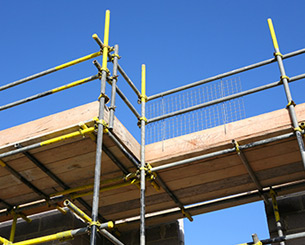
Working Safely at Heights
Most serious and fatal falls are from roofs, ladders, or scaffolds – and from a height of fewer than 4 metres.
Working Safely on Roofs
Many workers are seriously injured or even killed by falling off the edge of a roof, or through fragile roof materials. If you are asked to work on a roof, make sure of the following:
• Use guard rails or a scaffold on roof edges
• Prevent falls through roofs by using skylight covers, crawl boards, or physically marked exclusion zones.
• Only use a harness as a last resort, and only if you have been properly trained
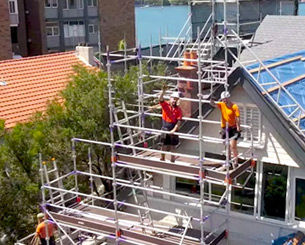
Working Safely on Ladders
A FRAME STEP LADDERS
Many workers fall from A-frame style step ladders because they were working from the top two rungs, or over-reaching.
• Ensure the ladder is free of defects and rated for industrial use
• Make sure it is fully open, locked and on stable ground
• Never lean so far that your belt buckle is outside the ladder stiles
• Never work on the top two rungs
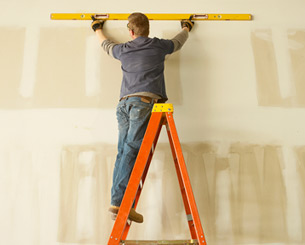
EXTENSION LADDERS
Many falls from extension ladders are because the ladder slipped outwards or sideways.
• Make sure your ladder is in good working order and rated for industrial use
• Set your ladder up so that the base is 1 metre away from the supporting structure, for every 4 metres of height (4:1 ratio)d
• Secure your ladder top and bottom where possible
• When climbing:
-
- face the ladder,
- have both hands free to grip the ladder, and
- have at least one hand and one foot in contact with the ladder at all times.
• Never lean so far that your belt buckle is outside the ladder stiles.
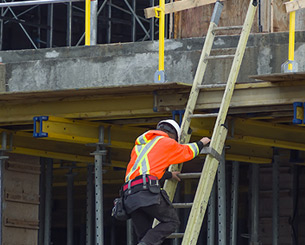
Working Safely on Scaffolds
Workers are most at risk of falling from scaffold if it has missing components or if it is misused.
These are some of the things that you should visually check from the ground, before using a scaffold:
1. Constructed on solid foundations (using 1 sole board preferably)
2. Mesh installed to prevent debris falling onto neighbouring properties
3. Diagonal bracing installed (every 4th bay)
4. Adequately tied to the supporting structure
5. Platforms are not overloaded with materials
6. Handrails & mid-rails installed (to prevent external & internal falls)
7. Kickboards installed to all working decks
8. Safe access and egress onto stairs and between deck levels
9. Scaff tag at scaffold entrance – showing the last inspection no more than 30 days ago
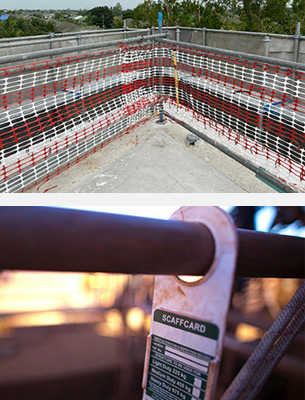
Working Safely Around Voids & Penetrations
Most falls through voids or penetrations occur because they were uncovered or there was no guard rail in place.
• Make sure all voids and penetrations have a clearly marked cover that is secured so it can’t be dislodged. Plywood that is marked and screwed into the ground is a cost-effective solution.
• If the void/penetration is large or needed for temporary access, put in guard rails.
• If using the void/penetration to access another level, consider using temporary stairs or make sure your ladder extends 1 metre past the landing point.
